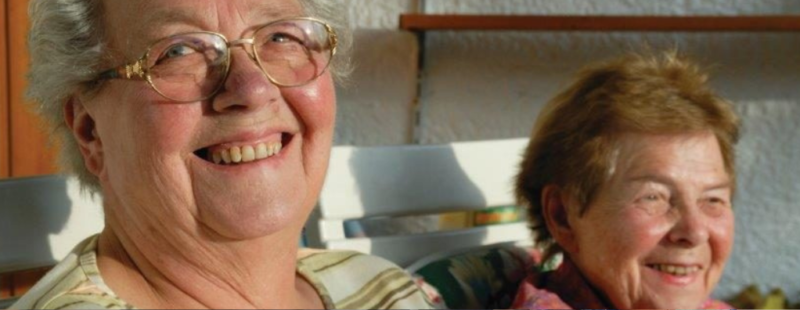Researcher Dhruv Sharma asks why in this ‘age of connectivity’, with so much research already carried out on loneliness interventions for older adults, we haven’t yet been able to solve the problem of chronic loneliness.
“Our bodies and minds are not designed for lonely lives”
When talking about the ‘social’ nature of human beings, noted primatologist Frans de Waal points out that as humans, “solitary confinement” is our second most extreme form of punishment – next only to death.
Like many other supporters of the Campaign To End Loneliness, I find it fascinating that in this day and age of connectivity, we’re all involved in mitigating loneliness experienced by so many members of our society. My PhD research examines interventions that have been designed to offer help and support to older adults affected by loneliness.
Combating loneliness is now a priority for many local authorities in the UK and they need expert advice in tackling it; but tackling loneliness is highly complex. We need only look at Cattan et al.’s seminal work on ‘preventing social isolation and loneliness among older people’ where they systematically reviewed loneliness interventions, some of which were implemented more than thirty years ago, to see that for three decades we have been grappling with similar, if not the same, issues.
In his speech in 2013, Jeremy Hunt acknowledged our ‘utter failure’ to confront loneliness as a society. So with all the research on how effective different types of interventions are, why haven’t we been able to solve the problem? How can we design loneliness interventions that are effective?
“To design is to devise courses of action aimed at changing existing situations into preferred ones”
My research aims to design loneliness interventions for older adults and argues for taking a deep, critical look at the ‘existing’ context, before charting a route to the ‘preferred’.
I reviewed a range of loneliness interventions, looking for patterns in current approaches, in an attempt to identify gaps that could be explored further. I developed a coding strategy that classified loneliness interventions as follows*:
- Scope: One-to-one, Community-based, and Group-based interventions, represented by the letters O, C, and G in the chart below
- Objective: Preventative, Supportive, or Remedial represented by red, orange, and green dots in the chart
- Level of Innovation: Incremental innovation or Radical innovation as can be seen on the vertical axis
- Technology usage: Digital or Physical, as can be seen on the horizontal axis.
A distinction between ‘digital’ and ‘physical’ interventions was established based on an older person’s level of (direct) engagement with internet-based technologies. It is also important to understand the distinction between incremental and radical innovation.
- Incremental innovations: those that reflect our existing ways of ‘thinking and doing’
- Radical innovations: those that fall outside our current ways of ‘thinking and doing’
Gaps in the existing research: interventions that are radical-digital
This early analysis of loneliness interventions revealed a gap in research in the form of lack of interventions that are radical as well as digital in nature. Interventions such as Breathe Life or Speaking Exchange, see older adults as providers, rather than recipients, of help and support, and use digital technologies to connect them with others who might benefit from these online interactions.
It is important to acknowledge that such radical-digital interventions may not prove to be a ‘silver-bullet’ solution to loneliness. However, because they are underrepresented, we do not know much about their potential strengths, or indeed, their possible weaknesses.
To be able to make a case for their usefulness or to be able to reject them, we must experiment by building more radical-digital interventions. One possible way of achieving this could be to find ways of converting existing incremental-physical interventions into radical-digital ones by introducing key elements from the radical interventions to incremental ones.
For example, an ongoing befriending service could look to find befrienders who might themselves benefit from conversations with older adults experiencing loneliness. Digital technologies can then be used to augment the core idea, such as designing services that allow these conversations to occur online.
Social Innovation for Active Ageing – designing radically different services
“As part of my research, I have also developed a framework called Social Innovation For Active Ageing (SIFAA) that argues for providing suitable replacements for the lost (social) roles of older adults by looking at them as providers of, rather than as recipients of, help, support, and guidance wherein they can offer help to someone else who could benefit from interacting with them.
This framework aims to inspire ‘intervention designers’ to develop services that are radically different in terms of how they address loneliness experienced by older adults. For instance, social innovation is inherently collaborative in nature and can be used to engage previously unimagined stakeholders who can benefit from liaising with older adults. Therefore, SIFAA can facilitate the development of, and experimentation with, radical-digital loneliness interventions, which is crucial to understanding the potential strengths and possible weaknesses of radical-digital loneliness interventions in this area.





No comments on this article yet. Please feel free to submit a comment below.
By submitting a comment you grant Campaign to End Loneliness a perpetual license to reproduce your words and name/web site in attribution. Inappropriate and irrelevant comments will be removed at an admin's discretion. Your email is used for verification purposes only, it will never be shared.